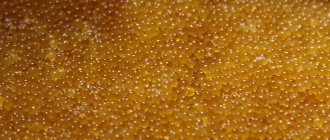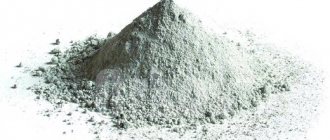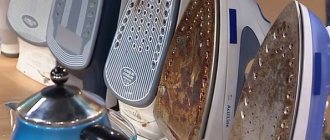Handwash
In principle, any product can be washed, even if it has the words “dry clean only” written on it. You just need to follow certain rules. Cashmere. Cashmere sweaters should be washed in warm water and a gentle detergent, such as a special wool shampoo. Be sure to rinse thoroughly. After washing, the sweater is laid out on a surface covered with a soft, dry towel and dried in this form. No twisting, hanging or stretching. Wool. Like cashmere items, wool items can be washed either by hand or in a washing machine on a special cycle. Dry in the same way, spread out on a flat surface. Leather. To clean leather items, such as jackets or skirts, use a damp cloth to wipe off all dirty areas. Aggressive friction, which could damage the surface, should be avoided. Silk. This is a very delicate fabric that is not particularly colorfast, so after washing (even by hand) there may be a slight loss of color brightness. Silk items should be washed with mild natural soap in water at room temperature. Dry on hangers.
Removing old stains from coats
Old greasy stains, to which dirt and dust stick over time, lead to the so-called greasy fabric, which begins to shine on the elbows, weights, in the pocket area and on the belt. In this case, it will not be possible to remove fat with talc or flour, but high-quality gasoline will solve the problems that arise quite quickly and effectively . Cover the stain with a clean cotton cloth, then soak a cotton swab generously in gasoline and wipe the stain through the cloth. After a few minutes, the stubborn dirt should remain on the cotton, after which you should take a regular sponge, moisten it in a soap solution and wipe the cleaned area of the product. If this is not done, the smell of gasoline will be absorbed into the fabric for a long time, and it will not be possible to overcome it even with the help of elite perfume.
Dry cleaning at home
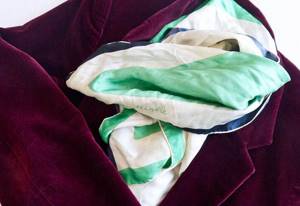
If you still don’t raise your hand when putting a product dear to your heart and wallet into water, then you can try a store-bought product for dry washing at home. It is intended for cleaning items made of delicate fabrics, velvet and wool. However, you need to remember that they cannot completely replace washing or professional dry cleaning. This is more of a means of simply refreshing an item, rather than cleaning it. To save money, this homemade dry cleaning miracle product can be made at home.
Ingredients and materials
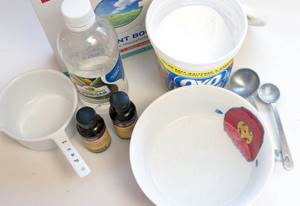
Small bowl ¾ tbsp. water ¼ tbsp. vinegar 1 tsp. borax 1 tsp. oxygen bleach 5-10 drops essential oil (optional) Clean rag Zippered pillowcase
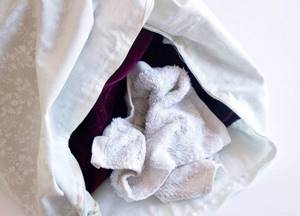
In a small bowl, mix water, borax and dry oxygen bleach. Add your favorite essential oil and mix. Borax and bleach will help gently clean clothes, while vinegar will remove unpleasant odors.
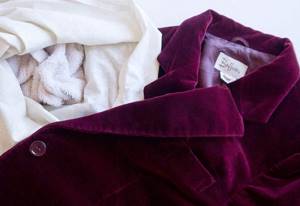
A clean rag is soaked in the cleaning solution and the excess liquid is wrung out. We put the items in a pillowcase, dampen a rag, and close the zipper. All this goes into the dryer for 30 minutes on a delicate cycle. We take it out and hang it up, iron it if necessary. For ordinary things, we suggest making two miraculous remedies with your own hands that work wonders.
Did you like the article? Then support us, click
:
Clothes help highlight your image and give you confidence. But, like other elements, it requires proper care. Every woman has something in her wardrobe that has special cleaning requirements. At times when regular washing is powerless and a more serious procedure needs to be carried out, dry cleaning will come to the rescue.
Features of dry cleaning
This is a type of stain removal from clothing that uses products that do not dissolve in water. Cleaning clothes at home saves time and allows you to treat the fabric in a gentle manner. There will be no deformation, loss of color, or pilling on delicate materials. This is the main advantage of the technique compared to conventional washing. Manufacturers almost always indicate care requirements on the labels, this allows you to maintain the appropriate appearance of the fabric.
The stain removal method is suitable for:
- Natural and artificial silk.
- Knitwear.
- Wool, especially cashmere and angora.
- Things made of fine linen.
- Leather and suede products.
- Velvet.
Even delicate mode can damage items made from these materials, and do-it-yourself dry cleaning guarantees quick removal. The technique should also be used by those who want to extend the life of purchased clothing.
Execution Process
To carry out dry chemical cleaning, you will need a washing machine with an air drying function, a special cover for clothes, wet wipes and a stain remover. Before starting, the outfits must be divided into white and colored, so that later the clothes do not fade. It is also recommended to separate knitwear from silk and wool so that lint does not fall on the surface of other fabric.

If there are a lot of stains on things, then before starting the procedure you need to remove them with a stain remover. Be sure to test on a piece of material to avoid damaging your clothing later. Using a cotton pad, apply the product to the fabric, and after 10-15 minutes, carefully wipe it off with napkins.
If nothing has happened at the application site, the stains have been cleaned off, and the fabric is not damaged, then the solution is suitable. Otherwise, you need to choose a product with a lower consistency of active substances.
Rules for dry cleaning clothes at home will help you avoid mistakes:
- Sorted items must be placed in a laundry bag. But you don’t need to fill all the space, you need to leave some space. Air will be able to penetrate inside the fabric and remove dirt.
- Having wet wipes near your clothes will protect the material from drying out and creasing.
- Turn on the drying mode in the machine for about 30 minutes and leave. The air temperature during the treatment period should be minimal.
- After dry washing, clothes should be hung on hangers so that there are no wrinkles and the fabric regains its original appearance.
Some washing machines do not have a “Dry” function; you can use other dry cleaning options. For this, home remedies and available materials are used. You can buy a ready-made kit with a stain remover, a clothes bag and special color-absorbing sheets.
Washing or cleaning: which is more effective?
You can clean almost any material without water
. This can be done at home without resorting to the services of professional salons. It is enough to purchase a product for dry cleaning of clothes, apply it to the fabric and just wait for the results, and then repeat this procedure if necessary. Here are the main benefits of dry cleaning clothes at home:
Do not forget that after several machine washes the fabric becomes much thinner and can easily fall apart literally before your eyes.
Of course, you can do without washing or dry cleaning by simply going over heavily soiled areas with a damp brush or rubbing the stain with a sponge dipped in water. But it should be borne in mind that water does not act on all stains, especially if it is already old and ingrained dirt. A brush can only smear the dirt or rub it even deeper into the material.
Cleaning fabric with a brush or damp sponge
makes sense only when we are talking about ordinary street dirt (for example, if a car splashes a person with water from a puddle on a rainy day). But you shouldn’t remove such dirt right away: you need to wait until it dries a little, and only then carefully scrape it off with a brush or hard sponge. But stains from fruit, grass or wine are almost impossible to remove in this way. The same goes for traces of chewing gum.
Most often, such cleaning has to be used when working with children's clothes, because babies are not very neat. This technology will help you quickly and efficiently tidy up school and sports uniforms, elegant holiday clothes made of synthetic fabrics, as well as replacement shoes made of suede and leather. Also, home dry cleaning will not harm table linen - tablecloths and napkins, since with repeated washing these things quickly lose their appearance, while the stains most often remain in place.
How to make cleaning safe
Dry cleaning is dry cleaning
, that is, cleaning clothes using certain chemicals. It should be borne in mind that during the interaction of these substances with the tissue, various chemical reactions occur. You should also keep the following in mind:
Hand wash products
The most popular stain removal method, suitable for silk, cotton and wool items. Other materials may become deformed, lose their appearance, or fade after cleaning. What to do if the item has faded, read this article.
Mix the soap in a basin or bucket until thick foam and bubbles appear on the surface. If items are intended to be dry cleaned, using warm water may damage the fabric.
The item is dipped into the liquid several times, then the dirty areas are washed off with your fingertips. There is no need to use additional tools to avoid damaging the material. After the stains are removed, rinse the clothes in cold water. This does not mean that you need to rub the fabric again; it is enough to dip the product in water several times and then lay it on a dry towel to dry. There is no need to squeeze out the water.

This technique is used often, but for stains that are easy to remove. Otherwise, special dry cleaning products are purchased and applied to the surface of the material.
Tips and warnings
In order not to make a mistake in choosing the type of fabric treatment, you need to read the information on the label. If dry cleaning is indicated there, then you should not experiment with liquid, because the manufacturer believes that this method can extend the life of the product. Machine washing in the wrong mode and aggressive drying with warm air, which leads to overdrying, significantly reduce the lifespan of items.
Products with lace, beads and embroidery cannot be machine washed as they will lose their original appearance. Even if the main fabric is cotton, washing such items is prohibited. Rigid materials can also be dry cleaned, as exposure to water can damage their texture.
The correctly chosen option for cleaning the material can not only remove the stain, but also make things look beautiful again.
If you carefully study the label on the product, you will notice that on certain items made from delicate fabrics information is provided that dry cleaning should be used as care. In this article you will get acquainted with popular methods and subtleties of dry cleaning at home.
How to clean a coat at home depending on the type of fabric
Basically, the manufacturer always provides complete information on the tag on how to properly care for the product. However, if there is none, below we have provided basic recommendations on how, depending on the type of fabric, you can clean your coat yourself at home without washing.
https://youtu.be/https://www.youtube.com/watch?v=jnzlt41TLbM
_
Drape
This is a fairly heavy fabric of natural origin, which is also very durable, since it does not wrinkle and does not fade under the influence of sunlight. However, drape, like other woolen materials, is “afraid” of hot water, so in this case cleaning should be done exclusively using dry methods. The most effective include the following:
- If the coat is only slightly dusty, you can do this by walking over its surface with a coarse brush. This should be done exclusively in the direction of the pile.
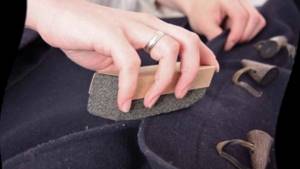
Cleaning your coat with a brush to remove dust
Important! If you don't have a brush at hand, rye bread will be an excellent substitute. You just need to place the coat on a flat surface and crumble the crumbs over it. Next, just move them around until small balls form.
- You can also clean a drape coat from various types of contaminants using a common dishwashing detergent diluted in a small amount of warm water. Using a lint-free cloth or sponge, apply the prepared solution directly to the stain itself and leave for 10 minutes. Afterwards, remove the soap particles with a clean, damp rag.
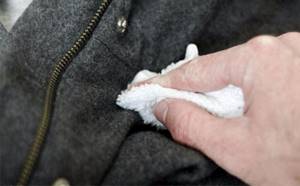
Cleaning a drape coat with detergent
Interesting : How to remove grease stains: simple methods
Cashmere
A very fastidious fabric to care for, which, due to its thermoregulatory properties and beautiful appearance, is widely used for sewing autumn coats. Therefore, this material should be handled with extreme care and only gentle cleaning methods should be used. These include the following:
- A damp cloth will help remove dust from a cashmere coat. You need to carefully wipe its surface, then dry it by hanging it on a hanger.
- If the dirt is greasy, you can remove it with laundry soap and ammonia. You just need to soak the stain first with a soap solution, and then with ammonia. Finally, wipe everything with a damp, clean cloth.
- In order to clean a cashmere coat from contaminants that you could not identify, you need to mix ammonia with glycerin and apply this mixture to the stain itself. Next, remove everything with a damp sponge.

Washing a cashmere coat in a machine - delicate cycle and temperature no higher than 30 degrees
Important! If you still cannot do without washing, cashmere products should be washed exclusively by hand or delicate machine wash with a water temperature no higher than 30 degrees.
Interesting : How to remove stains from kitchen towels at home?
Cleaning coats made from other types of wool
If you were unable to determine the material from which your coat is made, we suggest using several universal methods that certainly will not harm the product and will at the same time help to “overcome” various contaminants.

Cleaning coats with a roller is a universal product for all types of fabrics
- Remove dust from the surface of the coat only with a special roller designed for cleaning clothes with adhesive tape.
- In order to return the former shine to a black coat, the surface of the product should be wiped with a damp, lint-free cloth soaked in black tea.
- By combining alcohol and ammonia in equal proportions, you get a solution that can remove stains from alcoholic drinks. Simply moisten a sponge in this composition and wipe the dirt directly with it.
- Greasy and greasy stains from the surface of a woolen coat can be removed using regular gasoline. You just need to apply a piece of soaked cloth to the contaminated area and hold it there until they disappear.
- If you could not determine the origin of the stains, ammonia in a “duet” with a simple soap solution will help deal with such stains. To do this, add a tablespoon of ammonia and dish detergent or liquid soap to 100-150 milliliters of warm water. Apply the solution with a sponge to the surface of the stains, and remove any remaining residue with a damp cloth.
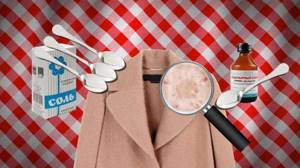
Helpers in removing various types of stains from coats
Important! You can clean cuffs, collars and other hard-to-reach places on your coat at home and without washing, using a product such as a mixture of ammonia and salt. The prepared solution is applied directly to these areas, and then the surface is wiped with a damp cloth.
What is dry cleaning
From the name it is clear that cleaning excludes the presence of water. To remove contaminants, both special chemicals and improvised means are used, which are applied locally to problem areas. Another option for dry cleaning is a washing machine with a drying function, which treats products with a stream of air.
Most often, such cleaning is used for very delicate fabrics that can become deformed under the influence of water. Dry cleaning is also good for handmade items.
Natural remedies
There are fabrics that cannot be treated with chemicals. They should not be washed, but dry cleaning is quite suitable for getting rid of various types of dirt. If you are sensitive to household chemicals, you can use the following products:
- Scotch. It is great for leather items. It will remove new and old stains.
- Baking soda. The product is considered a natural absorbent that absorbs dirt. The advantage of using it is the availability of soda.
- Starch. The product allows you to remove dirt from clothes.
- Brush. It can be used to clean suede products.
- Sand. Used in the processing of fur products. Heated sand is poured onto the problem area. Then the remains must be shaken off.
- Petrol. Allows you to remove dirt. It is needed to remove serious stains, but due to the strong smell, it should only be used in extreme cases.
- Hydrogen peroxide. The product is considered a natural solvent. It is great for cleaning white items.
- Ammonia. It can remove all stains. It is not used undiluted; ammonia solution is usually used.
- Acetic acid. The concentrated product perfectly refreshes clothes.
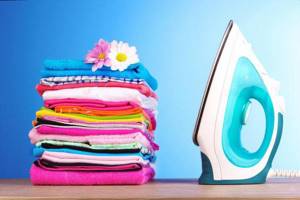
Do-it-yourself dry cleaning at home should be done carefully. Before using any product, you must read the instructions. If natural ingredients are used, you should be patient as it will take time to remove the stains. If you are afraid of ruining the item, it is better to contact a specialist. Specialists will perform the procedure with the appropriate product selected based on the type of material.
What pieces of furniture and fabrics can be dry cleaned?
Always pay attention to the label, because this is where the necessary information is provided on how to care for the item. If you see an empty circle on the tag, then the product should be cleaned dry. Similar things are made from:
- leather or suede;
- tweed;
- silks;
- viscose;
- cashmere;
- fine knitwear;
- Angoras;
- wool;
- velvet.
Under the influence of moisture, these materials may change structure, stretch or lose shape. They are used to create:
- clothes and shoes;
- furniture upholstery;
- carpets;
- home textiles.
You can take the items to the dry cleaner or clean them yourself. Please note that if the circle on the tag is crossed out, dry cleaning is prohibited.
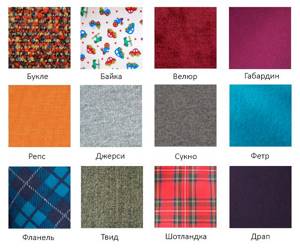
Pros and cons of the dry method
Dry cleaning, like any other, has its pros and cons.
- complete absence of product deformation;
- some fabrics are not able to survive other cleaning;
- Some contaminants, under the influence of water, are even more strongly ingrained into the fabric structure;
- unlike water, it can remove old stubborn stains;
- copes well with greasy and oily stains;
- Suitable for cleaning carpets, since the product does not get wet and there is no need to dry it.
- chemical products developed for the dry method of caring for products do not cope with previously washed items;
- There is an opinion that aggressive solvents are not completely removed from the material, and over time the item becomes unusable.
Advantages and disadvantages
Washing in water with powder is more common. Most stains are removed. Powder washing is not suitable for all clothes. It is recommended to dry clean delicate materials to avoid deformation. indicate the type of wash, marking is an empty circle. If dry cleaning is prohibited, the circle will have a cross.
What is dry cleaning? This is the removal of contaminants without water, using solvents. It is important not only to know what it is, but also in what cases its use is effective.
The benefits of dry washing are that old stains are removed. Water cleaning will not work; the stain will penetrate even deeper into the material.
Dry cleaning of clothes at home is carried out if there are traces of blood, berries, pencils or felt-tip pens. It copes well with grease and oil-based stains. Ineffective if stains are wet.
Modern dry cleaning products for home use have high surface activity; they are completely removed from the fabric structure without causing harm.
The material, even with numerous uses of professional compounds, does not deteriorate, which cannot be said about the use of some home methods.
Dry dry cleaning of products is carried out if the item cannot be washed by hand. The manufacturer indicates this on the label.
Suitable for silk, cashmere, fine knitwear, velvet, triacetate, angora and delicate suede. Also, dry cleaning of clothes is carried out if they are made of natural wool, which shrinks a lot when washed.
The wash is suitable for natural leather and fabrics with beaded embroidery. Any decor will come off or peel off due to mechanical impact over time; dry processing will not damage the adhesive base.
Home dry cleaning is suitable for extending the life of items.
Folk remedies
Some traditional dry cleaning methods do an excellent job of removing stains the first time, while others you will have to use more than once to achieve the desired result.
Universal cleanser. It is inexpensive, and fights dirt and bacteria very effectively.
Use baking soda to remove stains in different variations depending on the origin of the stain.
- Sprinkle a generous amount of baking soda onto a greasy oil or cream stain and shake it off after 20 minutes. The substance will absorb fat from the fabric, leaving the product without a greasy residue.
- Drops of paint on clothes will help remove kerosene and soda. Moisten the problem area with heated kerosene, and when the paint begins to dissolve, sprinkle with soda, and after a while remove.
- Sprinkle blood stains with regular laundry detergent (1 teaspoon), top with baking soda (2 teaspoons) and then pour vinegar (2 tablespoons). Rub the resulting slurry with a brush or your fingers, and after drying, remove by shaking the product.
- Cover old sweat marks with a mixture of baking soda and hydrogen peroxide taken in equal quantities. Leave on for about 30 minutes and then remove with a brush.
To prevent any unpleasant smell from remaining on your clothes, hang them outside or in a well-ventilated area.
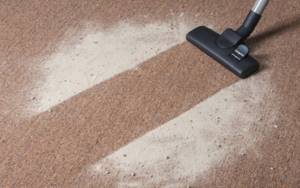
Sauerkraut
Regular sauerkraut works well for cleaning floor coverings. Please note that you can only use cabbage that was not prepared with vinegar.
Take the product, squeeze out excess liquid and spread over the carpet. Wait until the cabbage dries and vacuum up the remains. Dirt, dust and other small debris stick well to pieces of vegetables.

Table salt will help give the carpet its original appearance. Take at least 1 kg of product (depending on the size of the rug) and spread it over the surface. Rub the salt in the direction of the pile with a brush. After 2-3 hours, vacuum the coating.
If possible, snow or beat out the carpet before cleaning. After all the manipulations, it will shine with fresh colors.
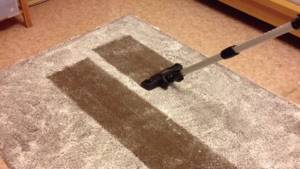
Vinegar
Vinegar has proven itself to be a great way to add brightness and richness to the colors of products.
To clean the carpet, dilute 2 tbsp. spoons of vinegar in 1 liter of water and treat the surface with the solution using a brush. Leave the product on the surface for several hours and then vacuum it.
At first glance, it may seem that such cleaning is wet, but since the procedure does not require drying, the process is considered dry.
Tea brewing
Tea brewing will help remove unpleasant odors and dirt from dark rugs. Brew a package of regular black tea and spread it over the surface after draining the remaining liquid. Wait until completely dry and remove with a vacuum cleaner. Not only fresh, but also pre-collected tea leaves from previous tea parties are suitable for the procedure.
Scotch
Using tape you can remove stains of various origins on leather and suede. Just stick a piece of tape on the problem area and tear it back with a sharp movement.
Please note that if the skin begins to peel, this method will not work, since particles of material will be removed along with the impurities.
An iron will help remove traces of vegetable or machine oil. Heat the device to the maximum temperature suitable for the material. Place several paper napkins on the front and back sides. Iron the surface. Under the influence of high temperature, the oil will melt and be absorbed into the napkins.
Starch
Corn starch will help get rid of stains of various origins.
- To remove grease stains, first prepare the item by laying it out on a flat surface and placing a napkin with heated starch under the stain. Rub the affected area a little and leave the substance for several hours.
- You will have to get rid of blood stains in several stages. Sprinkle cornstarch on the stain and leave for 10-12 hours. The stain will become lighter. By repeating the procedure several times, you will get rid of the blood completely.
- To remove the unpleasant smell of smoke, place the item in a plastic bag, covering it with starch. Shake thoroughly and, if necessary, remove any remaining substance using a vacuum cleaner.
You can also use starch to clean a sofa or car interior.

Brush
A brush with rubber teeth is great for dry cleaning. It gently treats fabric and perfectly removes dried stains. A rubber brush can be used to clean carpets, furniture, as well as clothes made of cashmere, suede or angora.
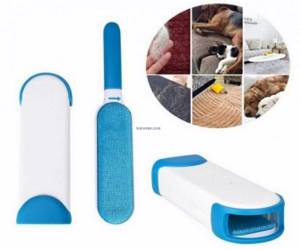
Turpentine
Suitable for processing wool or silk.
- Soak a cotton swab in the product and blot the affected area. Remove the excess by sprinkling the area with baking soda. If the stain is not completely removed, repeat the procedure.
- Mix turpentine with ammonia and wipe the problem area. Leave the mixture on the product for at least 3 hours.
The product removes greasy and old stains well.
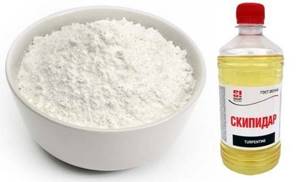
Wood sawdust
In a similar way, traces of gasoline are removed. Simply scatter the sawdust in the contaminated area and wait until it absorbs the gasoline.
Sand
Excellent for dry cleaning wool or fur.
Home Methods for Removing Stains
Folk remedies for dry cleaning are not always effective. They often have to be used several times to achieve the desired result.
Scotch
Scotch tape will remove any dirt on leather items. Place the adhesive side on the dried stain and tear off sharply.
Do not use tape if the leather item is in poor condition.
Iron
The iron will help clean the traces of machine (vegetable) oil. Cover the stain with paper towels on the outside and inside. Preheat the iron to maximum temperature (look at the item's label). Carefully walk the sole over the stain. The butter will begin to melt and will be absorbed into the napkins.
Baking soda
inexpensive, effective remedy.
To dry clean clothes, use the following methods for using baking soda:
- Sprinkle the dirty area with washing powder (1 tsp) and baking soda - 2 tsp. Pour 2 tbsp. l. vinegar. Rub with your fingers or a brush. Leave for half an hour. When the powder is dry, shake off the clothing. This recipe will help in removing blood stains.
- Greasey stains from food, foundation or ointments can only be removed with soda. Sprinkle generously onto the stain and shake off after 20 minutes.
- Yellow marks under the armpits are removed with soda and hydrogen peroxide. The components are mixed in equal quantities. The mixture is distributed over the sweat-stained areas and left for half an hour. Residues are removed with a brush.
- If paint gets on the item, you can remove the blot with 1 tbsp. l. soda and ⅓ glass of kerosene. There is no need to mix the ingredients. Kerosene is heated and applied to the contaminated area. The paint will begin to dissolve, then sprinkle with baking soda.
After cleaning, things are hung in a well-ventilated area. This is the only way to remove the smell of kerosene.
Starch
Corn and potato starch are used in baking. Luckily, this product helps remove stains without causing any side effects to fabrics.
Application:
- Lay the clothes out on a flat surface and heat the starch. Place a napkin with starch scattered on it under the stain. Rub in lightly and leave for 2-3 hours. Starch absorbs fat.
- Blood stains are more difficult to remove. Sprinkle them with a thick layer of cornstarch and leave overnight. Traces of blood will become light, the procedure must be repeated. After several attempts, the blood will be completely removed.
- Things saturated with the smell of smoke are placed in a bag, starch is poured in and shaken well. If it is a fur collar or fur coat, vacuum it afterwards to remove any residue.
Starch is used for cleaning because it is fast, cheap and effective.
Brush
The brushes have rubber teeth. They do not damage the fabric and remove dried stains well.
Suitable for cleaning clothes, carpets and upholstered furniture, suede, cashmere and angora.
Used for dyed wool and silk fabrics. A cotton swab is moistened in clean turpentine and the stained area is wiped. If contamination remains, the procedure is repeated. The remaining trace of turpentine is removed with baking soda.
Grease stains are treated with a mixture of turpentine and ammonia. The components are combined in equal quantities and left on the fabric for 3 hours.
Wood sawdust
Suitable for removing gasoline stains.
What to do: sprinkle sawdust on the stained area and wait until it absorbs gasoline. If the stain is large, replace the sawdust with fresh ones.
Sand
Woolen fabrics are cleaned with dry sand. It acts like starch. Heat the sand, sprinkle it on the cloth, and leave until it cools. Remove dirt with a brush.
Sand absorbs dust. It darkens after use.
Cleaning with hot sand is an excellent substitute for dry cleaning. This is an environmentally friendly way to remove grease stains and dust from clothes.
River sand is also used for cleaning fur products.
Hydrogen peroxide
Peroxide bleaches things perfectly, used on white fabrics.
How to use:
- Prepare a solution of 2 parts hydrogen peroxide and 1 part lemon juice. Apply to yellow spots under the armpits, rub lightly and remove with dry wipes.
- Mix 10 ml of hydrogen peroxide and ammonia. Pour the solution onto problem areas. Leave to soak and dry clothes.
In this way you can make silk and bed linen.
Ammonia
A universal stain remover that saves you in difficult situations. Most often, ammonia is used in diluted form, but there is a recipe for dry cleaning at home.
Mix ammonia with table salt in a ratio of 4:1. Rub the mixture onto the stained area. Wait for the treated area to dry, remove the residue with a brush.
Removing stains in the machine
Dry washing in a washing machine is faster than hand cleaning.
How it is carried out:
- Sort your things, zip them up, turn them inside out.
- Place your clothes in a special laundry bag.
- Place napkins (Vanish, Amway) with fragrance or stain remover inside.
- Turn on the “drying” mode, set the minimum temperature and set the timer for half an hour.
Almost every woman in her wardrobe has a stunning blouse, a beautiful sweater, on the tag of which are written the killer words: “dry dry cleaning only.” Often you have to refuse to buy such an item because you want to limit yourself to regular washing. But even at home you can arrange real dry cleaning.
Special products for dry cleaning
Dry cleaning of items can be done using specialized chemicals.
Ready-made dry cleaning kits are available for sale. These include:
- stain remover in the form of a spray, gel or pencil;
- case;
- napkins;
- air conditioner.
Well proven:
- SpotRemover - used to remove grease stains, as well as stains from sugar-containing liquids. Suitable for both light and colored materials. The set includes a special brush for better cleaning.
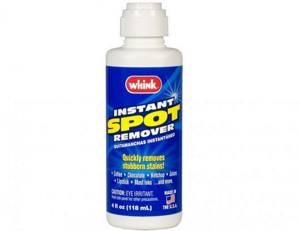
- Minute - presented in the form of a gel-like substance. Used to remove contaminants of any kind.
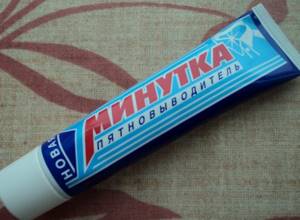
- Woolite – designed for knitted and woolen products. The product should not be used on products of bright colors that may fade.
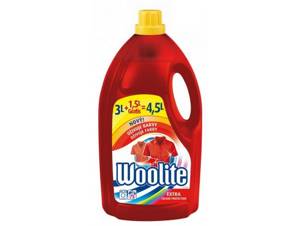
- Hagerty. Dry Cleaner Kit - used for dry cleaning of items made of cotton, linen, wool and silk.
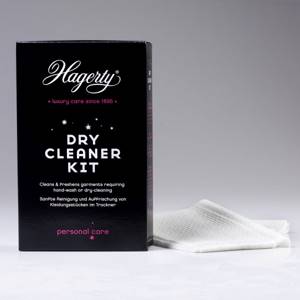
- Dryel is a dry cleaning product that not only removes dirt from various materials, but also leaves a pleasant aroma.
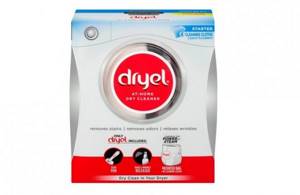
- K2r – copes with the most severe dirt and old stains. Can be used to clean items made from various fabrics.
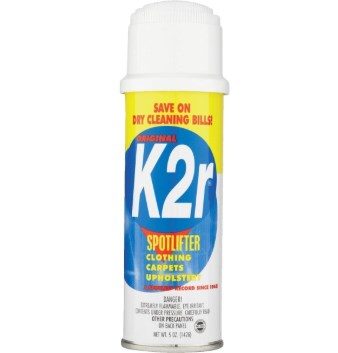
Please note that under no circumstances should you use water when using these products.
Hagerty: DryCleanerKit
This dry cleaning kit makes it easy to get great results. The composition contains active substances that can eliminate various stains. It also contains components that refresh the material. The products included in the kit are used for drying in a washing machine.
This stain remover is necessary for cleaning fabrics without harsh solvents, since they are not contained in the composition. The procedure makes clothes fresh, after which the material does not shrink or stretch. The fabric retains its attractive appearance. The set is suitable for processing linen, cotton, silk and wool products.
Dry Cleaning Procedure
The procedure itself for products for various purposes is practically the same, but still has its own nuances and secrets.
Dry cleaning of furniture
Upholstered furniture is almost the most vulnerable place in the house to food debris, dust or other contaminants. It is quite difficult to rid upholstered furniture of blood or urine stains, since the liquid penetrates deep inside.
The sofa can be cleaned from dust and small debris in several ways:
- Use a vacuum cleaner with a narrow brush to go over the surface, paying particular attention to depressions and folds.
- Pat the surface with a special beater or simply with your palms, after covering the sofa with a slightly damp sheet. Your movements will cause dust and dirt to fall off the upholstery and stick to the damp sheet.
Local contamination can be removed using chemicals or improvised dry cleaning products.
If the stains are very old and you were unable to remove the stains yourself, it is better to seek professional help.
Dry cleaning of carpets and rugs
Carpets must be thoroughly cleaned at least once every 3 months. If there is a child or pets in the apartment, cleaning will need to be done as often as possible.
For minor stains, you can clean the carpet or carpet using folk remedies or dry powder intended for carpets.
Any removal of dirt from a carpet includes the following steps:
- Raising lint using a vacuum cleaner.
- Rubbing in detergents with a soft brush.
- Repeated use of the vacuum cleaner to remove product.
If there are stubborn stains, before using the powder, remove local stains with special chemicals for dry cleaning.
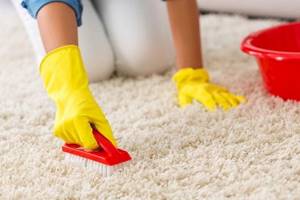
Cleaning curtains
Dry cleaning will be required if your curtains are made of viscose, silk, linen or cotton. You can remove local stains with special preparations or improvised means suitable for the appropriate type of fabric.
If your curtains require dusting, use a vacuum cleaner with a soft bristle brush attachment. If you don't have such a brush, wrap the curtain with a damp cloth. This way you can easily remove dirt and dust without damaging the material.
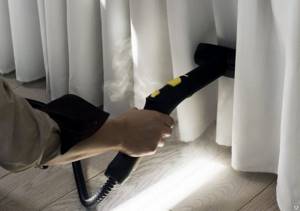
How to dry wash a mattress and pillows
Orthopedic and spring mattresses can only be cleaned dry. Remove old stains using suitable stain removers. You can completely clean the product using baking soda or a dry furniture cleaner. Distribute the substance on the surface and leave for several hours. Collect any remaining product with a vacuum cleaner.
You can also clean pillows and blankets in a similar manner.
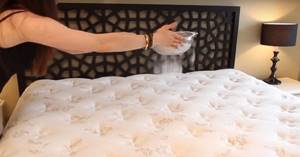
Facilities
Dry cleaning is often necessary for delicate materials, such as silk, wool, and fine cotton. Many items can be washed using the “Delicate Wash” mode. For example, clothes made of linen, viscose, triacetate.

If the dry method is chosen, then the work can be done using special chemicals or natural ones. They can be purchased at many household chemical stores or found at home. Most of them are easy to use and affordable.

